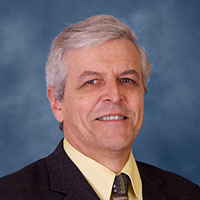 The Center for Health Care Financing, a unit within UMass Medical School’s Commonwealth Medicine division, assisted the state of New York in identifying more than $496 million in erroneous Medicaid payments and helped the state recover $211 million from the federal government.
The Center for Health Care Financing, a unit within UMass Medical School’s Commonwealth Medicine division, assisted the state of New York in identifying more than $496 million in erroneous Medicaid payments and helped the state recover $211 million from the federal government.
According to a press release issued by the New York Office of the Medicaid Inspector General, the $211 million payment represents the state’s share of the Medicaid funds and is the largest single monetary recovery in the agency’s history. The New York Department of Health’s Fiscal Group received the funds on Oct. 1.
The New York Office of the Medicaid Inspector General worked in conjunction with UMass Medical School to achieve the refund through the Third-Party Liability Home Health Care Demonstration Project, which focused solely on overpayments relating to these dual-eligible recipients. The money reflects project efforts during the years 2007 through 2010.
“We are grateful to have had the opportunity to help the state of New York in its pursuit of payment for these services from the federal government,” said Marc Thibodeau, executive director of the UMMS Center for Health Care Financing (at right). The center works in more than a dozen states helping Medicaid programs manage costs and maximize revenue.
Home health care providers with dual-eligible clients should bill Medicare first, and then bill Medicaid to cover the remaining amount. Once that process is complete, the dual-eligible recipient’s bill is paid in full.
“As in most cases, Medicaid is the payer of last resort for dual-eligible recipients,” Medicaid Inspector General James C. Cox explained. “In the cases reflected in these overpayments, bills for these home health care patients were inadvertently sent to Medicaid before first sending them to Medicare and following the correct process. Through the demonstration project, we were able to prove that Medicaid was overcharged and recover the money.”
Jason Helgerson, director of New York’s Medicaid program said, “This finding is further validation of the path set forward by the Medicaid Redesign Team of moving all services and populations into high-quality managed care, which will help to ensure that New York will contain costs within the Medicaid program. We are thankful for the work of the Office of the Medicaid Inspector General and the University of Massachusetts to accomplish these savings.”
This process is an example of government efficiency and process improvement in action. In the project’s initial phases, beginning in 2000, the traditional approach had been to examine each questionable dual-eligible claim on a claim-by-claim basis. This became overwhelmingly cumbersome. The Centers for Medicare and Medicaid Services agreed to allow the Office of the Medicaid Inspector General and UMass Medical School to employ a sampling methodology, enabling project staff to use a 200-case sample universe of claims for dual-eligible beneficiaries who received home care services paid by Medicaid for each year audited.
Following the establishment of the sampling methodology, the Office of the Medicaid Inspector General and UMass Medical School staff applied an extrapolation technique to calculate payments that New York State Medicaid had made that should instead have been made by Medicare first. “The administrative burden posed by the claim-by-claim approach had been enormous,” Cox added. “The extrapolation and sampling technique are standard processes used in professional auditing, and it makes sense that we were able to employ this technique to achieve the success of this project.”
“This is tremendous news for New York,” Cox said. “It reflects the tenacity and hard work of the staff within the Office of the Medicaid Inspector General’s Third-Party Liability Unit to enforce regulations that dictate that Medicaid is the payer of last resort in dual-eligibility cases.” New York was one of three states, along with Massachusetts and Connecticut, to join with the UMass Medical School in this project; the total reported here reflects only New York State’s portion of the recoveries.